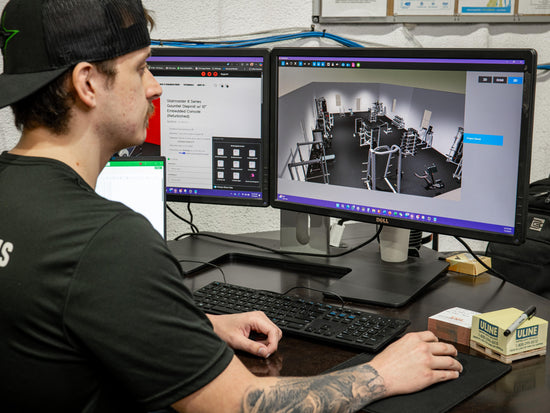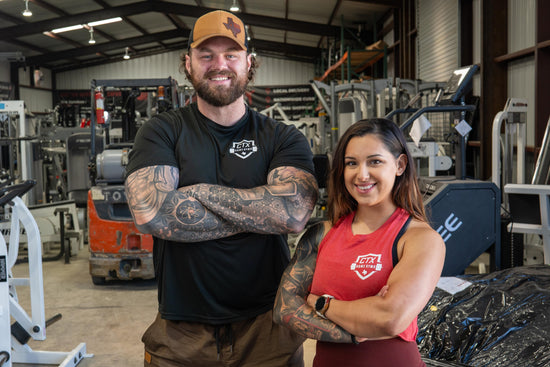
From Hobby to Hustle: How to Turn Your Garage Gym Into a Profitable Side Business
Share
You built your garage gym to escape crowded fitness centers, save on membership fees, and train on your terms.
But what if your personal setup could actually pay for itself — or even make you money every month?
Thousands of home gym owners are discovering new ways to turn their setups into income-generating assets. Whether you want to train clients, rent out your space, or start creating content, here’s how to turn your hobby into a hustle.
Step 1: Identify Your Monetization Path
There isn’t just one way to make money from a garage gym. The right path depends on your space, your skills, and your goals. Let’s break down the four most common — and profitable — options:
Train Clients in Your Garage Gym
If you’re already certified (or working toward it), turning your garage into a micro personal training studio is one of the most direct ways to earn.
What you’ll need:
- Liability insurance
- Clean, safe training space (at least 100 sq. ft.)
- Basic amenities: towels, fans, water, music
- A strong training niche (e.g. strength for busy parents, weight loss for beginners, etc.)
Pro Tip: Market your space as an exclusive, distraction-free training experience — not a “garage.”
Rent Out Your Gym by the Hour
Not everyone wants to train others — and that’s okay. Platforms like Peerspace, GymShare, or even your own social media can help you rent out your gym by the hour.
Example pricing: $25–50 per hour, depending on equipment and location.
What to include:
- Clear rental policies
- Signed waiver for liability
- Optional security deposit
Even if you only rent it out a few times per week, you could easily offset your equipment investment within months.
Create Fitness Content or Online Coaching
Your garage gym can also be your content studio.
Use it to film:
- YouTube tutorials on home workouts
- TikToks reviewing gear
- Short-form clips of your daily training routines
Monetization opportunities include affiliate links, sponsorships, digital programs, or virtual coaching.
Quick Start Tip: Tag brands in your setup videos and post before/after content. Authentic user-generated content performs best.
Buy, Flip, or Rent Equipment
If you love the hunt for gym gear, turn it into a side business.
How to start:
- Watch local marketplaces for undervalued or rare pieces (racks, plates, bars).
- Refurbish or clean equipment before reselling.
- Offer short-term rentals to new trainers or home gym owners.
You’d be surprised how many people will pay to “try before they buy” — especially when it comes to racks or specialty bars.
Step 2: Get the Business Basics Right
Before you train or rent to anyone, you’ll want to protect yourself and operate professionally.
Key areas to cover:
- Insurance: Look for general liability coverage for fitness professionals or home-based studios.
- Zoning & HOA: Check local rules before running a business from home.
- Waivers & Agreements: Require clients or renters to sign liability waivers.
- Business Registration: Consider forming an LLC to separate personal and business finances.
Step 3: Create the Boutique Experience
Even if your gym is compact, it can still feel premium. The key is to focus on experience over size.
Ways to elevate your setup:
- Clean, minimalist design with modular racks and storage
- Branded lighting, towels, or signage
- Background music and subtle scent
- Booking software like Calendly for client sessions
Think: small footprint, big experience.
Step 4: Market Your Garage Gym Business
Now that your space is ready, let’s attract paying clients.
Local Marketing Tips
- Create a Google Business Profile for “Personal Training Near Me.”
- Join local Facebook and Nextdoor groups.
- Network with chiropractors, physical therapists, or nutritionists who can refer clients.
Online Presence
- Post short workout clips consistently (reels, TikTok, YouTube Shorts).
- Share transformation stories with client permission.
- Use hashtags like
#garagegym,#homegymsetup, and#privategym.
Engagement idea: Ask clients to tag your business when they post progress updates — social proof sells better than any ad.
Step 5: Crunch the Numbers (It’s More Profitable Than You Think)
Let’s do the math on a modest setup:
Initial investment: $5,000
Monthly costs: ~$150 (insurance, cleaning, marketing)
Clients: 2 per day, 5 days/week @ $40/session = $1,600/month
That means you could break even in just over 3 months — after that, it’s all profit.
Step 6: Scale It — or Keep It Simple
Not every side hustle has to become a full-time business. You can:
- Keep it as a part-time passion project.
- Expand by hiring other trainers to use your space.
- Transition into a micro gym or branded studio under your own name.
Whatever your path, your garage gym gives you something most businesses can’t: freedom, flexibility, and fulfillment.
Conclusion: Your Gym, Your Rules — and Now, Your Business
Your garage gym isn’t just a personal investment — it’s a platform for independence.
Whether you’re training a few clients, flipping gear, or building a personal brand, you’re already ahead of the curve.
Make your space work for you. Build smarter. Train better. Earn more.
Which Garage Gym Business Model Fits Your Lifestyle?
Answer a few quick questions to discover your best monetization path — whether that’s training clients, renting your space, creating content, or flipping equipment.
Need equipment for your new venture? We can help!
Shop All Equipment

